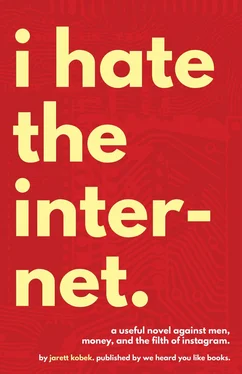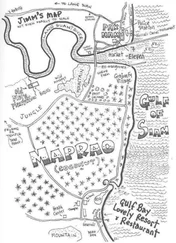Twitter had been given $22,000,000 from the City of San Francisco to try and revitalize the Tenderloin.
Revitalization was institutionally racist code for adopting a policy of racial cleansing which made the neighborhood less welcoming to Black people.
While Twitter was changing the world on the seventh, eighth and ninth floors of 1355 Market Street, its employees could look down at Market Street and see crack addicted sex-workers having the stuffing beat out of them by people infected with tuberculosis.
It was a nice time to work for Twitter.
It was a shitty time to have tuberculosis.
Given the fact that it was displacing an African-American population, the curious thing about Twitter was its popularity with Black people. Twitter was fashionable enough with Black people that this popularity had its own name: Black Twitter .
Like so much in American life, Black Twitter was a sinister burn engineered by people without eumelanin in their epidermises to exploit the labors of people with eumelanin in their epidermises.
The users of Black Twitter were supplying White people with effortless access to a body of language and thought which could be harvested and transformed into content on websites owned by White people.
The managers of these websites were very interested in demonstrating a fluency with Black culture but had little-to-no interest in hiring the people who lived it.
A fluency with Black culture would attract more advertisers. Actual Black people would scare advertisers.
Back in the good ol’ days, when White people wanted to steal culture, they actually had to, you know, like, spend time around Black people.
But in 2013, the story was very different.
The iPhone had changed everything .
Twitter itself used Black Twitter to serve advertisements.
Twitter’s leadership and ownership structures were both remarkable and unremarkable for their total absence of Black people.
The only people making money off Black Twitter were White people.
According to eumelanin-rich Byron Crawford, who was the best writer of the new Millennium, there was a word for this.
Slavery.
Google was not the only corporation with buses. Apple, eBay, Electronic Arts, Facebook and Yahoo had their own buses. So did a multitude of smaller companies. Tens of thousands of workers were making a daily commute via the buses.
J. Karacehennem was mildly obsessed with the Google buses and told Adeline that they were the best evidence of J.G. Ballard having been a High Priest of the Future.
J. G. Ballard was a eumelaninless British author who came to prominence in the middle of the Twentieth Century. He had lived in a prison camp during World War Two. He wrote about weird sex and weird technology and weird sexual technology.
“At first,” said J. Karacehennem, “I thought the buses signaled that we were living in an early Ballard book, like maybe Crash or The Atrocity Exhibition , where he writes about how people of the future would move beyond the perversions of the Nineteenth and Twentieth Centuries and create new eroticisms. You know Crash is all about people who fuck whilst they crash cars. So I was thinking that maybe all the Google people were riding dirty in their buses with enormous erections and wet vaginas and spontaneously orgasming through the simple pleasure of the bus’s vibrations.
“Then I read Super-Cannes ,” continued J. Karacehennem, “and realized we’re living in late period Ballard. Super-Cannes is about a complex on the Riviera where various corporations have their campuses and house their workers. The narrator discovers a crimewave that no one wants to discuss. He further discovers that it happens because there’s an organized program of barbarism for the complex’s corporate residents. They’re all taken out on buses and get into fights with Arab gangs in the surrounding cities and the cops are paid off to look the other way. Who’s gonna fuck with the big companies, and who really cares if their engineers are beating the shit out of a bunch of fucking ragheads, right?
“That’s my theory,” said J. Karacehennem. “I think the Google buses are taking employees around and getting them in gang fights. Why else are they so interested in maps? Do you think all that bullshit is really about making information free? Fuck no! Google is mapping the world so that they have a huge database of primo locations filled with the dispossessed. Google Street View is a map of the blood to be spilled.
“But they can’t fight Muslims, not in San Francisco. This city doesn’t have enough Muslims to ensure that every Google employee has the same opportunities for cross-faith violence. You can’t achieve peak Muslim-bashing with such a small sample of Mahometans. Which leaves Latinos and Asians. So that’s what happens. Every night at 4am, a prearranged number of Google employees gather together and get into huge fights with members of the Jackson Street Boyz and the 22 Boys and MS-13.”
“Whatever does your lady think of this bright idea?” asked Adeline.
“If I bring it up in polite society, she pretends that she doesn’t know me.”
“Darling,” said Adeline. “I hadn’t the slightest you were so fascinated by the buses. You must break bread and exchange heap big wampum of words with my friend Christine. She’s harboring some very dubious ideas about the whole thing.”
“Why haven’t I met her, anyway?” asked J. Karacehennem.
“Oh, Pip,” said Adeline, “Don’t you recollect our unfortunate encounter with that woman Sonja at Margaret Tedesco’s gallery? If so, do you perhaps recall your own behavior with regards to the poor girl?”
“What did I say?” asked J. Karacehennem. “I never remember.”
“As we three waited at the corner of 25th and Guerrero, she placed her winsome hand upon your shoulder. Which caused you to have rather an unfortunate response. You walked into out into the traffic and said that you’d rather be dead than spend a moment suffering her touch.”
“Oh right,” said J. Karacehennem. “Now I can remember.”
“I considered that perhaps you had revealed your inner bigot. I worried, darling, that a meeting with Christine might end the same.”
“You thought I was unpleasant to Sonja because she’s trans?”
“That’s the obvious conclusion,” said Adeline. “You’re very progressive, dear, but you’re so unpredictable. And you’re from Southeastern Massachusetts, darling. There’s an inner Masshole in you.”
“What the fuck, Adeline?” asked J. Karacehennem. “I wasn’t horrible because she’s trans. I was horrible because she’s a fucking dullard. I’m not transphobic! I’m just a snob! I’m a flaming liberal who believes in Jeffersonian Democracy!”
When J. Karacehennem said that he believed in Jeffersonian Democracy, he was using irony.
Irony was a spoken or written device that presents an intended meaning opposite of the stated one.
If you were speaking with irony, you might say of a very stupid person, “Yes, she is a very smart woman.” If you were speaking with irony, you might say of a very ugly man, “Yes, he is a handsome gentleman.”
Irony was not that different than the mechanism of advertising, with its two meanings, except that in advertising the second meaning was not inherently oppositional to the first.
Most Americans used the adjective ironic to denote something other than a situation involving irony. When they were being ironic, or when something was ironic, they generally meant that there was a coincidence. Sometimes the coincidence was unfortunate.
Читать дальше












